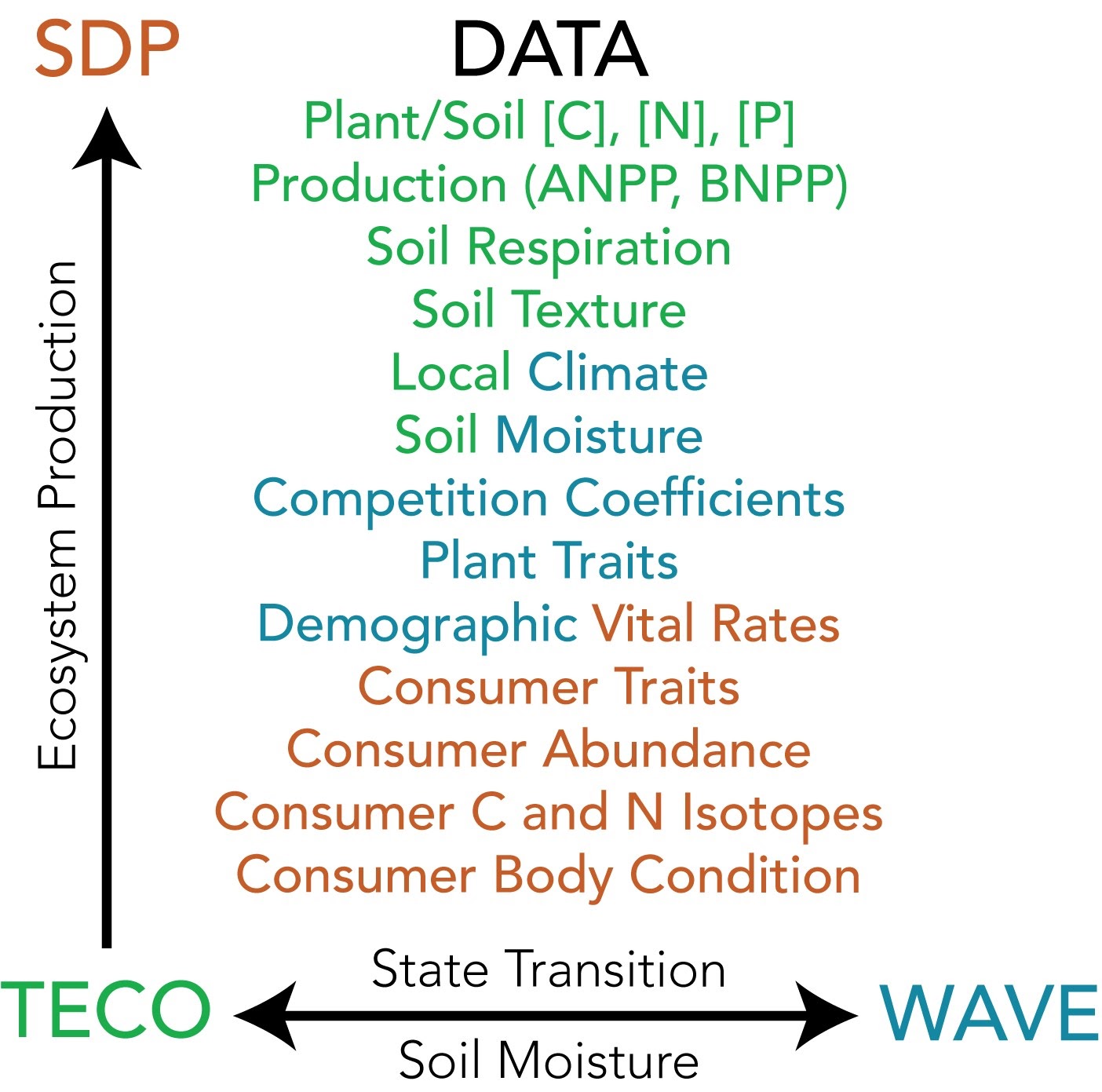We integrate our empirical work with dynamic models that span producers and consumers at population, community, and ecosystem levels. The motivation for this data-model interface is two-fold. First, the models function as tools for data analysis and integration, allowing us to project responses to manipulations of climate mean and variance at scales that cannot be directly observed. For example, the models enable tests of whether increased climate variance will accelerate or decelerate ecosystem transitions, even though these transitions may play out over decades or centuries. Second, the models function as tools to explore possible future scenarios that are not represented in our long-term observations or experiments. In this way, models facilitate general inferences that transcend the particular conditions represented by our empirical work. For example, we are using models to explore consequences of climate variance that are more (and less) extreme than the variance treatments in our signature Mean-Variance Experiment.
Model Overview:
Our three models predict WAVE: the spatial trajectories of ecosystem transitions, TECO: the ecosystem processes that result from plant community trait distributions and ecosystem transitions, and SDP: the influences of climate and plant community composition on consumer fitness and population dynamics (see Integration Figure). A unique feature of our modeling components is that we will use a Bayesian framework to assimilate data from both experiments and observations. This allows us to constrain the models and fully quantify uncertainty in a workflow that forecasts the long-term trajectories of SEV populations, communities, and ecosystems.

This Integration Figure illustrates interactions among SEV LTER three modeling approaches: WAVE, TECO, and SDP. Datasets that are used to inform and parameterize the models are listed in the middle.
Model Integration:
Each model can stand alone to evaluate how climate variability affects ecosystem transitions (WAVE), ecosystem processes (TECO), and consumer dynamics (SDP), respectively. Importantly, we also use these models to inform each other. WAVE predicts the trajectories of foundation plant species, which, in turn, control community trait distributions. By incorporating predicted state transitions and associated plant trait distributions into TECO, we link plant community changes to ecosystem process rates. We then can use outputs from TECO to feed back to WAVE to modify demographic transitions and competitive dynamics of foundation plants based on measured and inferred biophysical feedbacks (e.g., plant species influences on the soil moisture profile). Since ecosystem processes and ecosystem transitions determine food abundance and quality, results from the WAVE/TECO interface drive consumer dynamics in SDP. Altogether, we are using these models to provide an integrated understanding of how and why drylands respond to changes in climate mean and variance across levels of biological organization.
